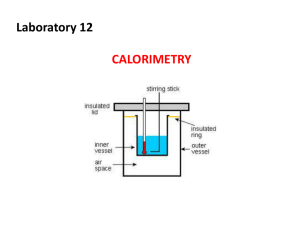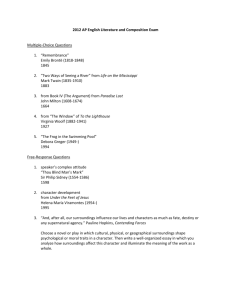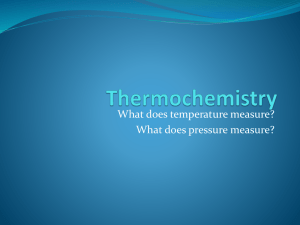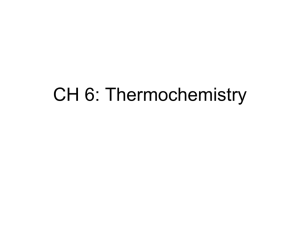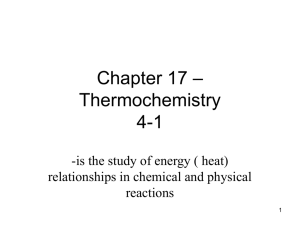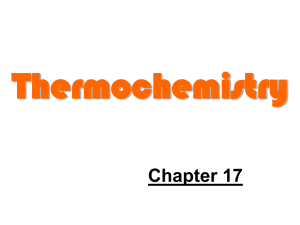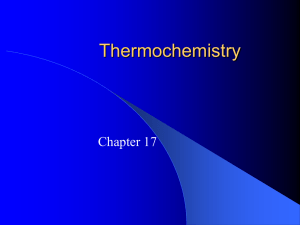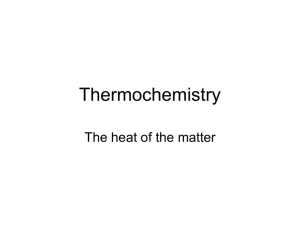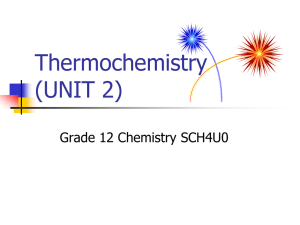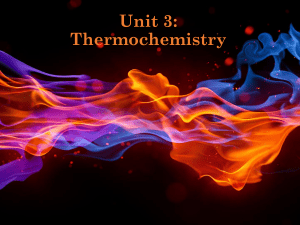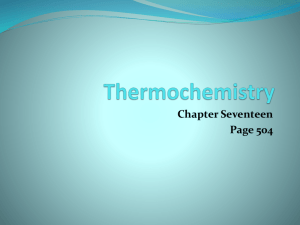Driving Forces
advertisement
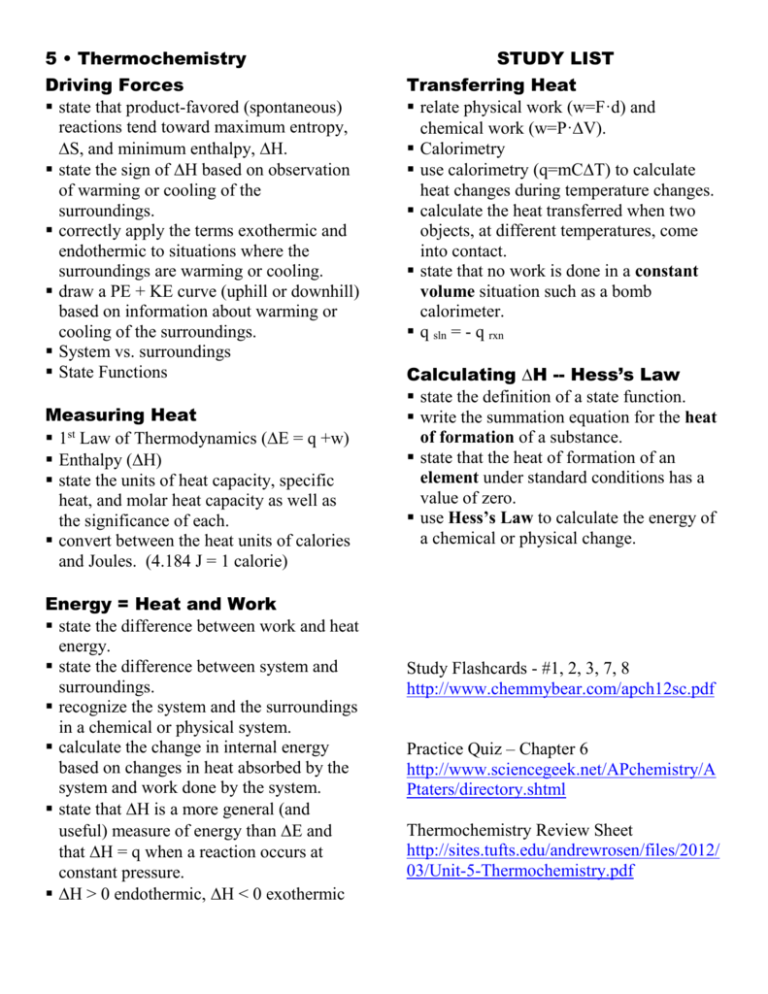
5 • Thermochemistry Driving Forces state that product-favored (spontaneous) reactions tend toward maximum entropy, S, and minimum enthalpy, H. state the sign of H based on observation of warming or cooling of the surroundings. correctly apply the terms exothermic and endothermic to situations where the surroundings are warming or cooling. draw a PE + KE curve (uphill or downhill) based on information about warming or cooling of the surroundings. System vs. surroundings State Functions Measuring Heat 1st Law of Thermodynamics (E = q +w) Enthalpy (H) state the units of heat capacity, specific heat, and molar heat capacity as well as the significance of each. convert between the heat units of calories and Joules. (4.184 J = 1 calorie) Energy = Heat and Work state the difference between work and heat energy. state the difference between system and surroundings. recognize the system and the surroundings in a chemical or physical system. calculate the change in internal energy based on changes in heat absorbed by the system and work done by the system. state that H is a more general (and useful) measure of energy than E and that H = q when a reaction occurs at constant pressure. H > 0 endothermic, H < 0 exothermic STUDY LIST Transferring Heat relate physical work (w=F·d) and chemical work (w=P·V). Calorimetry use calorimetry (q=mCT) to calculate heat changes during temperature changes. calculate the heat transferred when two objects, at different temperatures, come into contact. state that no work is done in a constant volume situation such as a bomb calorimeter. q sln = - q rxn Calculating H -- Hess’s Law state the definition of a state function. write the summation equation for the heat of formation of a substance. state that the heat of formation of an element under standard conditions has a value of zero. use Hess’s Law to calculate the energy of a chemical or physical change. Study Flashcards - #1, 2, 3, 7, 8 http://www.chemmybear.com/apch12sc.pdf Practice Quiz – Chapter 6 http://www.sciencegeek.net/APchemistry/A Ptaters/directory.shtml Thermochemistry Review Sheet http://sites.tufts.edu/andrewrosen/files/2012/ 03/Unit-5-Thermochemistry.pdf
